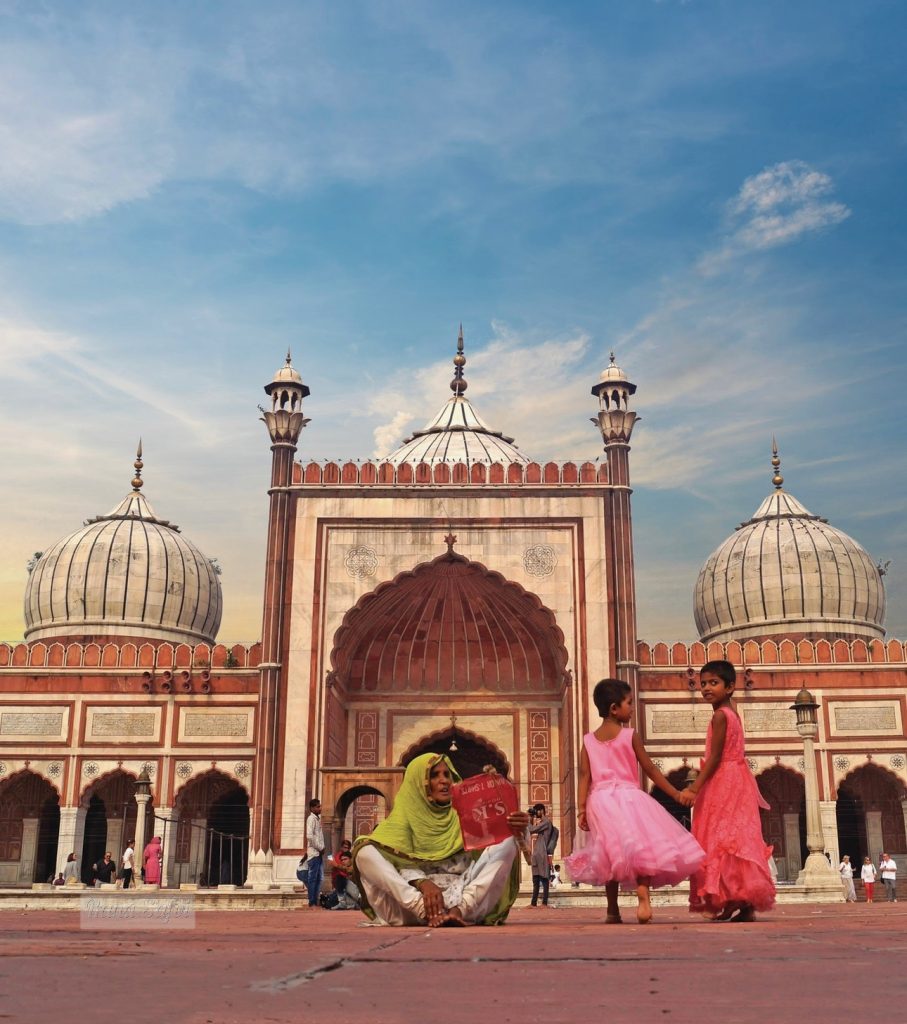
Shah Jahan gave orders for building a fort in Delhi in 1639AD and entered the “Qila e Mubarak”, as it was named on June 15, 1648. While the fort was being erected, he also had the city “Shahjahanabad” built around it. He encouraged his wives, sons, daughters and nobles to build houses, mosques and parks.
Thus Jahanara Begum built the Chandni Chowk, his wives built mosques, Dara Shukoh and nobles built mansions.
Once Shah Jahan began living in the Qila and the settlers in Shahjahanabad grew in number, he felt the need for a congregational mosque bigger than existing ones.
The location chosen thus was a hillock called Pahari Bhojala, at a distance of 1,000 yards (0.91km) from the Qila. The mosque was planned in such a way that it would cover the hillock in its entirety. To this day, the area of Shahjahanabad is hilly and if one walks down the narrow alleys of the walled city, one can see huge rocks from the medieval time supporting old mansions.
On October 6, 1650, the foundation stone was laid for a Jama Masjid by the emperor himself and it was built under the supervision of Sa’dullah Khan, the prime minister, and Fazil Khan, the khansaman or the head of the imperial household establishments.
It was built in six years at the cost of Rs 10 lakh by 6,000 workers. The cost didn’t include the price of the stones that were presented, according to Basheeruddin Ahmed in Waqeat e Dar-ul Hukumat Dehli, by various rajas and nawabs.
The mosque was set on a plinth of 30 feet; it is 261-foot long and 90-foot wide. Its three marble domes with black stripes are a landmark, an icon of the area if you will, and visible for miles around.
#jamamasjiddelhi #minaret #jamamasjid #mughalarchitecture #delhitrilogy

